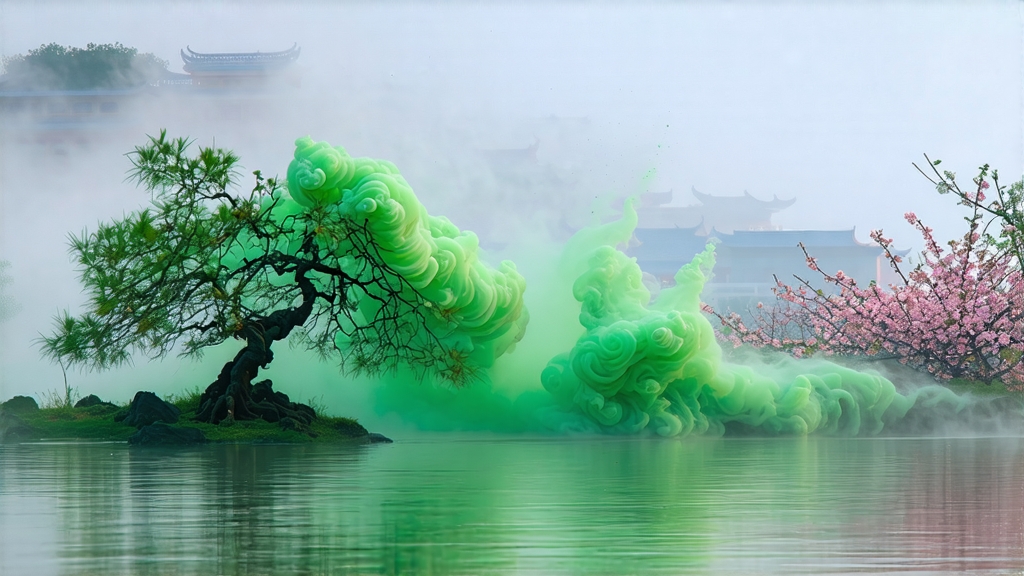
Tucked between the mist-laden hills of Dongting Mountain and the gentle ripples of Taihu Lake, Biluochun—literally “Green Snail Spring”—has been seducing tea lovers since the late Ming dynasty. According to local chronicles, a tea-picking nun wandering the terraced orchards in 1675 caught the perfume of ripe peaches drifting through the fog; she followed the scent to a tiny grove of wild tea trees whose leaves exuded the same fragrance. The imperial court soon renamed the tea “Scary Fragrance” (Xia Sha Ren Xiang) for its almost supernatural aroma, but the Kangxi Emperor, charmed yet diplomatic, rechristened it Biluochun to honor its snail-shell shape and early-spring harvest. Thus a humble mountain tea entered the canon of China’s Ten Famous Teas, forever twining its fate with the cool lake mists and the peach, plum, and apricot blossoms that still intercrop among the bushes today.
Although all Biluochun hails from Jiangsu, two micro-appellations define quality. Dongting Dongshan, a peninsular ridge, yields the softest leaves; the lake moderates temperature, while granite soils drain quickly, forcing roots to struggle and concentrate amino acids. Dongting Xishan, a true island reachable only by boat, rises higher and harvests a week later; here the same cultivar develops slightly thicker cell walls, giving a creamier liquor and a longer aftertaste. Purists speak of “true mountain” (shancha) versus “flat land” (pingcha); leaves picked above the 200 m fog line keep their downy white tips and can steep five times without flattening.
Crafting Biluochun is a race against dawn. Pickers—70 % women whose fingers are said to “know the temperature of the bud”—pluck only the single apical leaf still folded like a miniature paper fan. The standard is one inch long, no wider than a matchstick, and covered in silvery trichomes that will later create the tea’s signature “white frost.” By 9 a.m. the wicker baskets descend to the village square where three centuries of tradition unfold in fifteen frantic minutes.
Withering happens in the shade of peach trees; the leaves lose 10 % moisture and absorb floral volatiles from the drifting petals. A master then fans the pile with a bamboo tray, judging readiness by the change from grassy to lactic aroma. Firing occurs in a wok heated to 180 °C; hands—protected only by callus—toss the leaves against the iron, stopping enzyme activity within 90 seconds. The critical “rub & curl” stage follows while the leaf temperature drops to 60 °C. Palms press, twist, and flick in a motion that resembles calligraphy: the thumb forms the spine, fingers spiral the leaf, wrist provides momentum. Each bud is rolled 6–8 times, tightening into the trademark spiral and locking in peach and magnolia notes. Final drying at 50 °C reduces moisture to 5 %; 1 kg of finished tea requires 70,000 buds, the daily yield of four pickers.
To unlock the lake mist trapped inside those curls, water must be cooler than one expects. Use 70 °C spring water—never distilled—and glassware so the dance can be watched. Pre-warm the vessel, then add 3 g of tea per 150 ml. Pour the water in a slow circle so the spirals rise and fall like tiny green dragons. The first infusion, 45 seconds, releases a pale champagne liquor with a top note of fresh peach skin and a base of steamed edamame. The second, 30 seconds, intensifies the amino-sweet umami; the third, 50 seconds, brings a minerality reminiscent of wet slate. Fourth and fifth steeps are still fragrant if the leaf is coaxed with 60 °C water and an extra 20 seconds. Throughout, the aroma should billow upward like the morning fog for which the region is famous; if it collapses, the leaf was over-fired or stored with moisture.
Professional cupping follows a quieter ritual. Five grams are placed in a 110 ml white porcelain gaiwan; water at 80 °C is poured and immediately decanted to awaken the leaf. The first formal steep lasts one minute; liquor is sucked across the palate with a quick hiss to aerate. Top-grade Biluochun presents a tri-layered profile: front of sweet pea